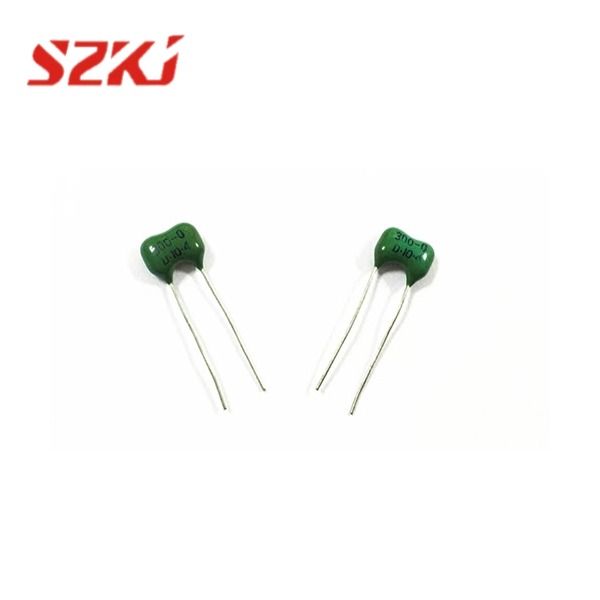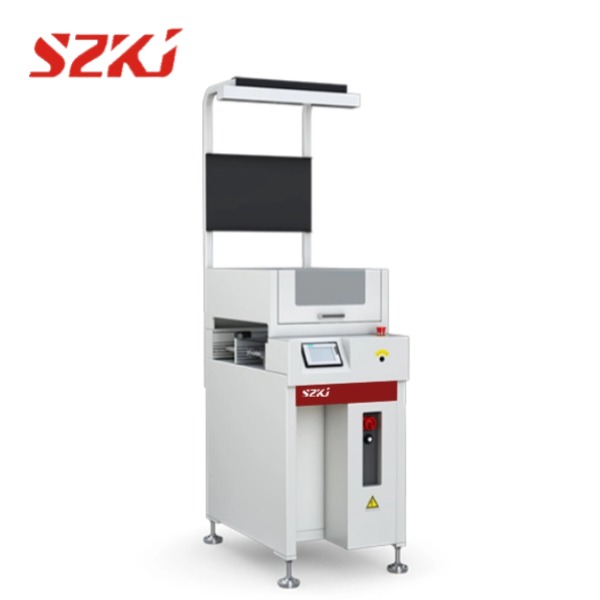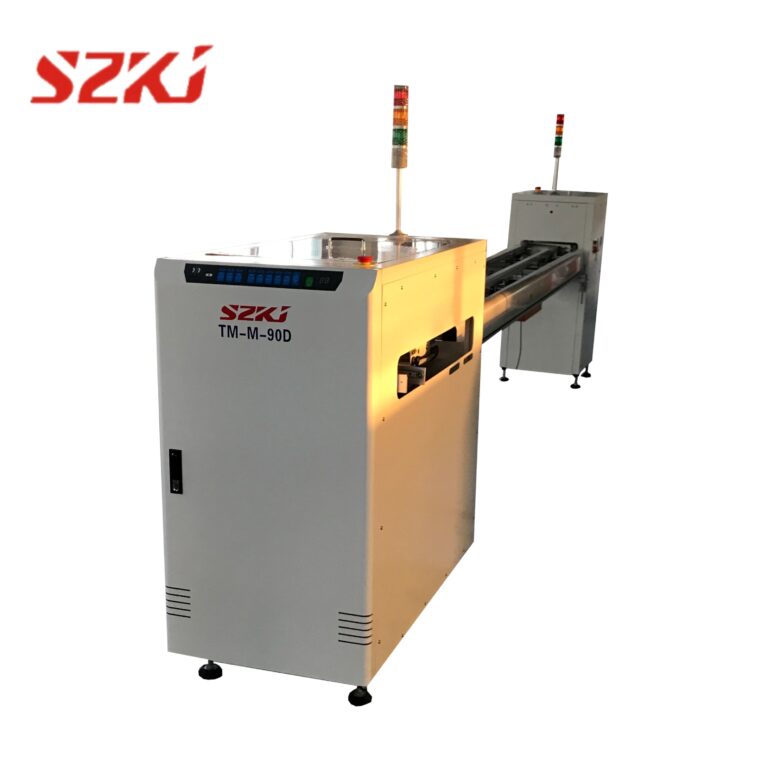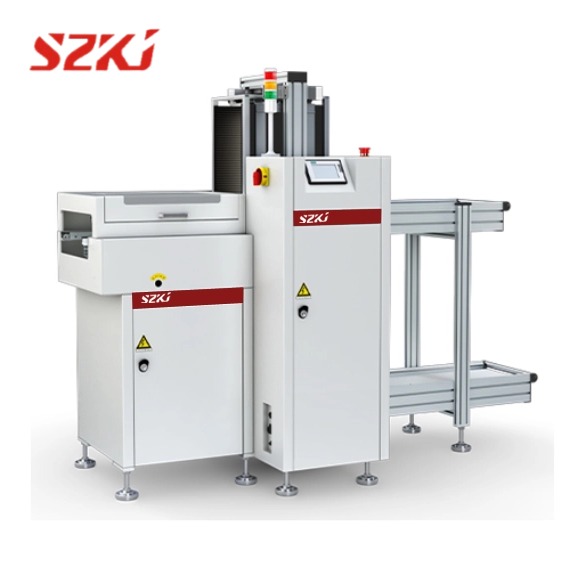Table of Contents
ToggleThe SMT process (Surface Mount Technology process) is a common way to build electronics by mounting tiny components directly onto a circuit board. In this process, specialized assembly equipment is used to quickly and accurately apply solder and place parts. This beginner-friendly guide will walk you through the SMT production process step by step. You will learn how each key machine – the solder paste printer, pick-and-place machine, and reflow oven – works in the assembly equipment line. We will also cover how to choose the right machines, keep them running well, and share practical tips from real assembly lines.
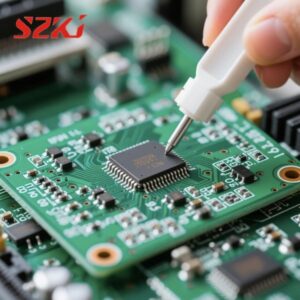
Overview of the SMT Process
In the SMT process, a bare printed circuit board (PCB) becomes a fully assembled electronic board. The main steps are:
Solder Paste Printing – Applying a thin layer of solder paste onto the board at precise locations.
Component Placement – Using a pick-and-place machine to pick up each electronic part (resistors, chips, connectors, etc.) and place it on the board where the solder paste was applied.
Reflow Soldering – Heating the board in a reflow oven to melt the solder paste so it bonds the components to the board.
Inspection – Checking the board (often with automated optical or X-ray inspection) to make sure all parts are placed correctly and soldered well.
These steps flow in sequence on an SMT assembly line. Each step uses its own equipment. Together, the smt process and assembly equipment work in harmony to turn plain PCBs into electronic products. In the next sections, we’ll look in detail at the main machines in this line.
Key SMT Assembly Equipment
Solder Paste Printer
The first piece of equipment in the SMT line is the solder paste printer. This machine applies solder paste only where it is needed on the PCB. Solder paste is a sticky mixture of tiny solder particles and flux. In a printer, the bare PCB is placed under a metal stencil with cut-out holes matching the board’s pads. A rubber blade (squeegee) spreads solder paste across the stencil, and the paste is forced through the holes onto the pads of the PCB. This process ensures each pad gets the right amount of paste, acting like glue for components.
Key points about solder paste printers:
Stencil alignment: The machine precisely aligns the stencil over the PCB. Good alignment is crucial, or the paste will be off-center.
Squeegee action: A sharp edge (squeegee) pushes paste through the stencil. The machine controls the squeegee pressure and speed for even coverage.
Consistent print: After printing, the board moves on. Consistency (paste volume and placement) is very important for reliable solder joints.
Types: There are manual or semi-automatic printers (suited for small runs or prototypes) and fully automatic printers (for large production, with automatic board loading and cleaning).
Maintenance: The stencil and squeegee must be cleaned regularly to prevent clogging. Many factories use stencil cleaning stations or automation to wipe off excess paste.
In summary, the solder paste printer is the first assembly equipment of the SMT process. It prepares the PCB for component mounting by applying solder paste exactly where components will sit.
Pick-and-Place Machine
After printing solder paste, the next equipment is the pick-and-place machine. This high-speed robotic machine picks electronic components from reels or trays and places them onto the PCB. The board (with paste on it) is fed through the pick-and-place, which has multiple heads and feeders. Feeders hold strips of components (like resistors, capacitors, or chips). A nozzle (usually using a vacuum) picks up one component at a time and moves it to the correct spot on the PCB.
Important features of pick-and-place machines:
Vision systems: Most machines have cameras. Before picking or placing, the machine’s camera checks each component and the PCB location to make sure alignment is perfect. This helps avoid misplacements.
Multi-head design: Some machines have several nozzles that can work in parallel, increasing throughput. Others use one fast head or one flexible head for larger parts. Often, production lines use a fast machine for small parts and a slower one for big, odd-shaped parts.
Speed and Precision: Machines can place thousands of components per hour (about 10,000-100,000 CPH is common). Precision is typically within ±10-50 microns (about the width of a human hair).
Component range: The machine can handle many part sizes, from tiny 0.4 mm pitch IC pins to larger connectors or chips. You load different feeders with different components based on the board’s design.
Programming: A pick-and-place is programmed with the board layout. It knows which component (from which feeder) goes to each board position. For beginners, software often converts a PCB design file (like a CAD or centroid file) into the machine’s job program.
Maintenance: Keep the vacuum nozzles clean and check that feeders are feeding smoothly. Calibrating the placement accuracy (often called “teach” or “fiducial alignment”) is important to maintain precision.
The pick-and-place machine is the heart of SMT assembly equipment because it handles the actual placement of all parts. A well-maintained machine with a correct program means parts are placed quickly and accurately on the paste-covered pads.
Reflow Oven
Once the components are in place, the last major piece of equipment is the reflow oven. In this equipment, the circuit board is heated in a controlled manner, causing the solder paste to melt and solidify, thus permanently soldering the components to the PCB. The PCB passes through a long, tunnel-style oven on a conveyor belt. The oven has multiple heating zones (such as preheat, hold, reflow, and cool down). Each heating zone is set to a different temperature profile.
Key features of a reflow oven:
Temperature profile: The board gradually heats up (preheats) so that moisture escapes and all parts warm evenly. Then the temperature is raised above the solder’s melting point (reflow zone), causing the solder paste to liquefy and form solder joints. Finally, the board is cooled down in the cooling zone so the solder solidifies. Proper temperature control is vital; too hot or too fast can damage components, too cool or too short won’t solder fully.
Conveyor system: A belt carries the board at a steady speed. Belt speed and zone temperatures are often adjustable to fine-tune the process for different boards or solder materials.
Atmosphere: Many ovens use hot air or convection. Some special ovens use nitrogen gas to reduce oxidation and improve solder quality (nitrogen reflow).
Size and type: There are in-line ovens (for continuous production) and batch ovens (boards are stacked or moved in batches, used in small shops or for prototyping). In-line ovens have longer conveyors and are used in high-volume factories.
Safety: Reflow ovens produce heat and sometimes fumes. Proper ventilation or filters are used to keep the air safe.
Maintenance: Ovens need routine checks: clean the conveyor belts, check thermocouples (temperature sensors), and ensure fans and heaters are working evenly. The oven’s calibration (actual vs. set temperatures) should be checked with a temperature profiler before important production runs.
After reflow, the PCB is fully soldered. The core process of SMT is now complete: the solder paste bonds the component to the board. Usually, the next step is inspection (for example, using an automated optical inspection machine) and possible testing, but our focus is on the three main assembly machines.
Selecting and Evaluating SMT Assembly Equipment
Choosing the right assembly equipment is important for a smooth SMT production line. Here are some key factors to consider:
Production Volume and Speed: Estimate how many boards you need to produce daily or weekly. High-volume production needs faster, automatic machines. Smaller volumes or prototyping might use simpler or semi-automatic equipment.
Board Complexity: Check the size of the board and the types of components. Fine-pitch components (those with very small spacing), a large number of ICs, or large connectors may require a higher-end, more precise machine. A board with simple components (mostly resistors and capacitors, for example) may only require standard equipment.
Component Variety: If you use many different types of components (varied sizes, shapes, or odd layouts), check if the machine supports them (for example, pick-and-place machines have limits on component size or weight).
Budget (New vs. Used): New equipment offers the latest technology and warranty, but costs more. Used equipment may be cheaper in terms of upfront costs, but there is no guarantee later on. Whether new or used, make sure the machines are in good working condition.
Manufacturer and Support: Good technical support, training, and documentation can save headaches. If possible, choose reputable brands or suppliers who can help with installation, training, and spare parts.
Automation Level: Full automation (auto-loading of boards, conveyors between machines, self-centering stencils) speeds up production but costs more. For a beginner or small shop, semi-automatic machines (where an operator loads each board or stencil manually) may be more affordable and easier to start with.
Facility Requirements: Check the space, power, and environment. SMT equipment may need 220V power, compressed air, and ESD-safe flooring or mats. Make sure you have enough clean, dust-free space and proper lighting.
Future Expansion: Plan. If your production needs grow, can the equipment be upgraded or integrated into a larger line? Flexibility can be important for a growing shop.
By evaluating these points, you can select SMT machines that fit your needs. It’s often helpful to list your requirements and compare different models or suppliers. Visiting a demo of the equipment (if possible) can also help you decide.
Equipment Maintenance and Management
Regular care and management keep your SMT assembly equipment running well and extend its life. Here are practical maintenance tips:
Daily Cleaning: Clean off solder paste residue and dust. For printers, wipe stencils and squeegees after use. For pick-and-place, clean the vacuum nozzles and the board guides. For ovens, remove any debris from the conveyor.
Periodic Calibration: Check and calibrate critical settings. In printers, make sure the board alignment and stencil pressure are correct. In pick-and-place machines, run a placement accuracy test using a calibration board or a small batch and adjust as needed. In reflow ovens, use a profiler to check the actual temperature profile.
Inspect Moving Parts: Look at belts, gears, bearings, and motors. Listen for unusual noises. Tighten any loose screws and replace worn conveyor belts or rails. A conveyor belts in reflow ovens and sturdy tracks in pick-and-place units are important for keeping PCBs upright.
Replace Consumables: Keep an inventory of common wear items. This includes nozzles and filters (for pick-and-place), squeegee blades and stencil wipes, and conveyor belts or filters in the oven. Replace them according to the manufacturer’s recommended schedule or whenever performance drops.
Store Supplies Properly: Solder paste should be refrigerated and used before its expiration date. Components (especially moisture-sensitive ones) should be stored in dry, anti-static conditions. Proper storage avoids problems like dried-out paste or moisture causing components to pop in the oven.
Environmental Control: Maintain a clean work area. Control humidity (too dry can cause static electricity; too humid can lead to oxidation). Use anti-static mats or wrist straps for PCB handling, since static can damage chips.
Documentation and Logs: Keep service records and notes of settings that work well. If a machine has a fault or if you change a setting, write it down. Over time, these records help troubleshoot issues.
Training and Safety: Make sure operators know how to safely handle the machines and materials. For example, training on loading PCBs and components, or on safely entering an oven for cleaning when it’s cooled. Also ensure electrical and mechanical safety checks are done regularly.
Good maintenance is as important as good equipment. By scheduling regular check-ups and cleaning, you prevent breakdowns that could stop production. Many factories use a maintenance checklist: for example, daily, weekly, and monthly tasks for each machine.
Practical Tips and Experience Sharing
Based on real-world experience, here are some tips for beginners working with SMT assembly equipment:
Start Small and Test: When you set up a new board, run a single board or a small batch first. Check the solder paste print, placement alignment, and reflow solder joints before doing a full run. Catching issues early saves time and scrap.
Monitor Quality at Each Step: After printing paste, visually inspect (or use solder paste inspection if available) to ensure paste is correct. After placing parts, check for any obvious misalignments. After reflow, inspect solder joints (solder should be shiny and filleted around component leads). Quick visual checks help you adjust settings right away.
Adjust, Don’t Force: If a placement or solder issue appears, tweak the process parameters instead of pushing faster. For example, if components are misaligned, recalibrate the pick-and-place machine. If solder joints are too shiny or dull, adjust the reflow temperature profile. Small adjustments can fix problems without causing more.
Keep Spare Parts Handy: Have extra parts that wear out. Spares like printer stencils, pick-and-place nozzles, and even a spare conveyor belt (or parts of it) can reduce downtime when something needs replacing.
Learn the Equipment Interface: Spend time learning the software controls of each machine. Understand how to load a program and how to pause/resume a run. Being comfortable with the controls makes production smoother.
Maintain Clear Documentation: Write down assembly instructions, machine settings, and bill of materials (BOM) for each board. If you (or a colleague) come back to a project after a few months, these notes will save you from having to relearn everything.
Safety First: SMT lines involve solder, heat, and moving machines. Always follow safety guidelines – for example, never reach into a moving machine and wear safety glasses when inspecting boards with tools. Ventilate solder fumes or use an extraction system.
Continuous Improvement: After a production run, review what went well and what didn’t. Maybe the printer needed a slower squeegee speed, or a pick-and-place nozzle had errors. This feedback to improve the next run. Over time, these refinements lead to a very stable and efficient process.
Remember that working with SMT equipment has a learning curve. Patience and careful observation help you catch mistakes and improve. Ask for help from experienced colleagues or technical support when needed. With practice, your confidence will grow and you’ll run the SMT process more smoothly.
Conclusion
The SMT process relies on specialized assembly equipment to turn a blank PCB into a functioning circuit board. By understanding each machine’s role – the solder paste printer, pick-and-place machine, and reflow oven – beginners can grasp how modern electronics are assembled. Choosing the right assembly equipment, keeping it well-maintained, and following best practices will help ensure reliable production. As you gain experience with these machines, you’ll build confidence and efficiency in your SMT production line. With setup and maintenance, even a small shop can master the SMT process and produce high-quality electronic boards.

